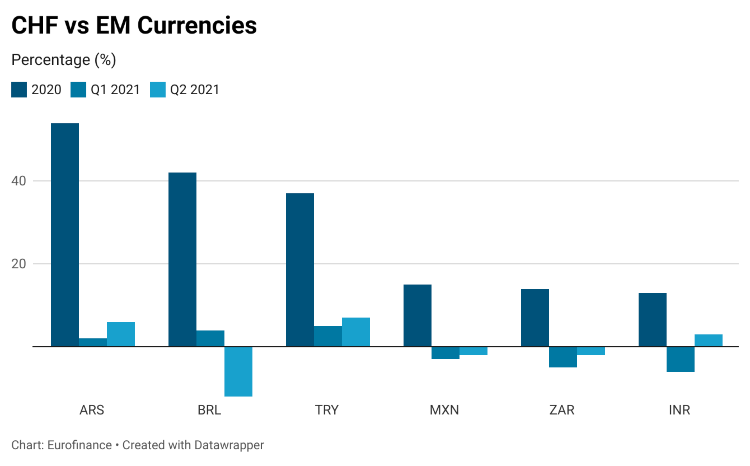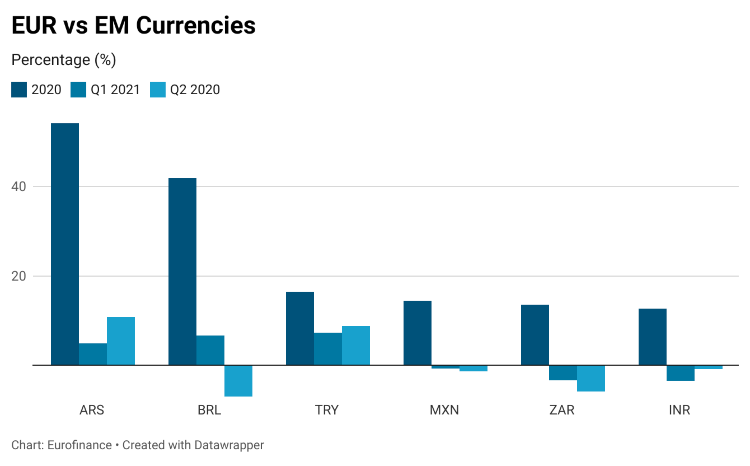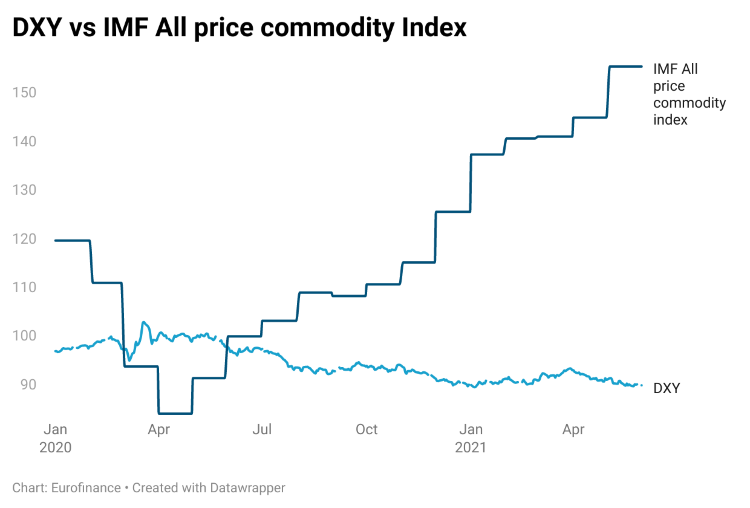Consumer goods giants bet on EM recovery with FX hedge reduction

Unilever, Nestle cut hedges before emerging market FX rebound
Hit by a weakening dollar and depreciation in key emerging market (EM) currencies last year, European consumer giants Nestle and Unilever are now poised for a rebound after they reduced their FX derivative positions by $3.5 billion. The companies reported a €6.7 billion and €2.8 billion reduction in sales when they translated revenues earned in dollars and EM currencies back into CHF and EUR respectively.
However, as the global economy moves out of the pandemic, these companies are betting that the pain is over after they reduced their FX notional hedges by €3.5 billion at the end of 2020. These cash flow hedges were forward contracts timed to hedge inventory purchases that would be realised as sales during 2021. And the bet may be vindicated in second quarter results as currencies such as the Brazilian real and Russian rouble strengthened during the last three months.

“Foreign exchange had a negative impact of 5.3%, reflecting the continued appreciation of the Swiss francs against most currencies” said François-Xavier Roger, CFO at Nestle during an April 22 conference call. The company generated only 1.3% of its revenue in Switzerland during 2020 leaving it susceptible to currency volatility against CHF as it recorded a €1 billion FX impact in the first quarter of 2021.
However, the huge upswing in the Swiss franc took a pause in March 2021, as it depreciated against most EM currencies in the subsequent quarter. Anticipating a halt in its home currency’s appreciation, Nestle positioned itself by reducing its notional FX hedges to CHF 7 billion at the end of 2020, 11% lower than a year before.
“The exchange rate dynamic improved during the quarter with the impact turning neutral in the month of March…We will see more [inflation] probably coming from the input cost inflation as we progress into the year, maybe a little bit less currency depreciation because we start seeing things stabilizing.” Roger continued.

Nestle’s Anglo-Dutch rival, Unilever reduced its notional FX hedges by 30% to €6.1 billion in 2020, taking its hedge ratio, the proportion of international revenue hedged using currency derivatives down to only 15.5% in 2020 as compared to 21.6% in 2019 and 44% in 2018.
The company recorded a €1.06 billion translation impact on sales during the first quarter of 2021, representing 8.7% reduction in reported turnover. However, the management expects the impact to soften to 3%-4% of turnover for FY 2021.
“I would say foreign exchange impact is less at the moment… foreign exchange is pretty concentrated in a few markets like Argentina, Brazil and Turkey, etcetera” said Graeme Pitkethly, CFO at Unilever.
Dollar tailwind
US-based consumer goods multinationals have faced fewer FX risk challenges. Procter & Gamble which reports its revenue in US dollar was better off than its European counterparts as the US dollar continuously depreciated throughout 2020, falling 12.5% from its high in March 2020.
“Foreign exchange had a nominally positive impact on net earnings for the quarter, including both transactional charges and translational impacts from converting earnings from foreign subsidiaries to U.S. dollars”, the company said in its quarterly filing for the first quarter. While in 2020, the translation losses were only 0.65% of total revenue.
Even though the company reduced its notional FX hedges by 21% to $6.3 billion in Q1, it increased its expected impact from foreign exchange on the bottom line to $150 million from $100 million a quarter ago.
AB Inbev, which reports in US dollars, disclosed a 5.5% FX translation reduction to Q1 2021 revenues. The company hedges 45% of developing country revenues, the highest such proportion among major consumer goods multinationals.
Falling US Dollar escalates inflationary pressures
With international commodity prices being quoted in US dollars, a falling US dollar will result in higher prices of these commodities. Thus, this inverse relationship increases the cost of raw materials for these firms as the dollar weakens.

“The commodity cost challenges we face this year will, obviously, be larger next fiscal year.” said Andre Schulten, CFO at P&G as the company as the company expects commodities to be a headwind of $125 million, a $400 million swing to the negative since its initial guidance. Meanwhile, management at Unilever expects the impact from FX to be a smaller proportion of the total than commodity risk.